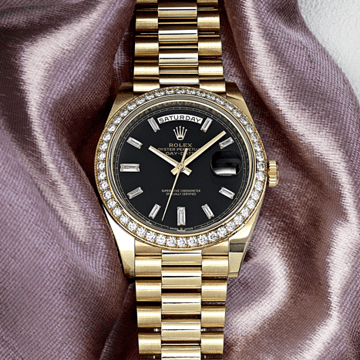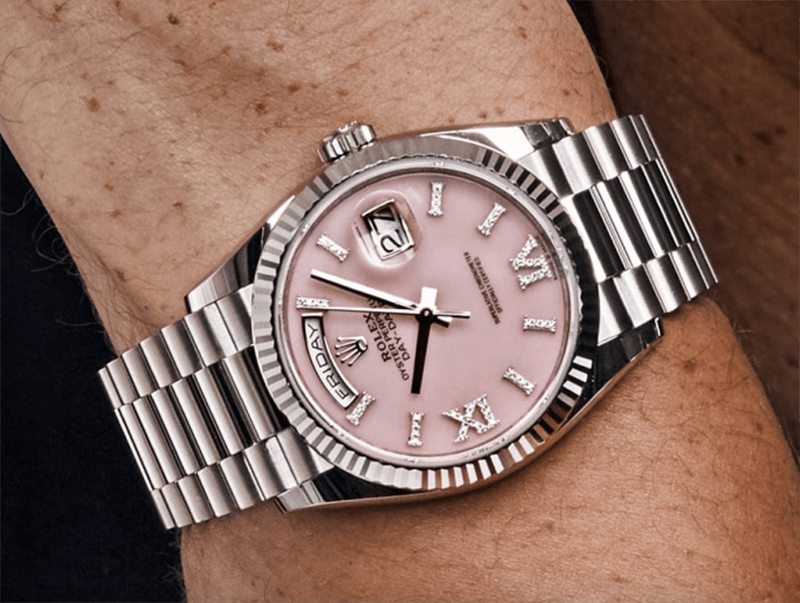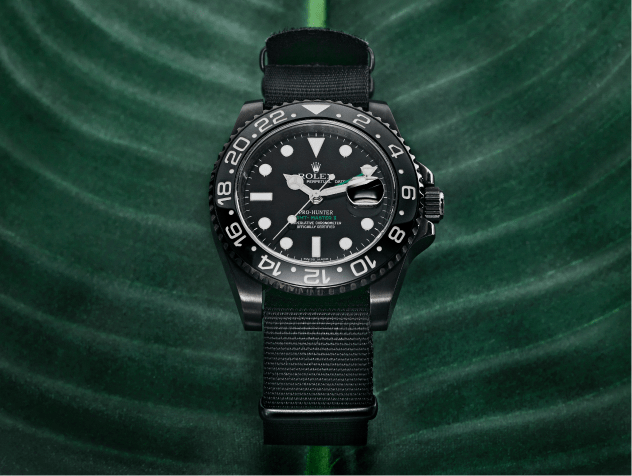Rolex Daytona
Rolex Daytona – A Legend of Speed and Precision
The Rolex Daytona is an enduring icon of motorsport excellence, designed for those who demand both precision and luxury. First introduced in 1963, the Daytona has become one of Rolex’s most coveted timepieces, featuring a high-performance chronograph and a tachymeter bezel for measuring speed. Its sleek design and association with racing legends have solidified its status as a grail watch among collectors.
Whether on the racetrack or as a statement of refined style, the Daytona represents the pinnacle of Rolex craftsmanship and innovation.
Explore the Most Popular Daytona Models
Daytona Ceramic Bezel (Ref. 126500LN)
The latest evolution of the stainless steel Daytona, the 126500LN, features a sleek black ceramic bezel, with dial options in classic white or black. Its modern materials and updated aesthetics make it a standout in the Daytona collection.
Daytona Meteorite Dial (Ref. 126519LN)
Crafted in white gold, the 126519LN features a rare meteorite dial paired with a black ceramic bezel. This luxurious and distinctive design makes it a collector’s favorite.
Daytona Yellow Gold with Green Dial (Ref. 116508)
Nicknamed the "John Mayer," the 116508 pairs a yellow gold case with a vibrant green sunburst dial. Its bold design and cult status make it one of the most sought-after Daytonas.
Daytona Everose Gold (Ref. 116505)
The 116505, crafted entirely from Rolex’s proprietary Everose gold, exudes elegance with dial options like chocolate or black. This luxurious iteration is perfect for those who appreciate refined details.
Daytona Platinum with Ice Blue Dial (Ref. 116506)
Celebrating the Daytona’s 50th anniversary, the 116506 features a platinum case and a stunning ice-blue dial. This exclusive model is revered as one of the most luxurious Daytonas ever created.
At Wrist Aficionado, we offer an exceptional selection of Rolex Daytona watches, from the versatile stainless steel 126500LN to the exclusive platinum 116506 to the Daytona “Rainbow” in rose, yellow, and white gold. These timepieces embody the perfect combination of performance, precision, and luxury. Explore our collection today and discover why the Daytona is a legend among collectors.
About Rolex Daytona
Rolex Daytona – A Legend of Speed and Precision
The Rolex Daytona is an enduring icon of motorsport excellence, designed for those who demand both precision and luxury. First introduced in 1963, the Daytona has become one of Rolex’s most coveted timepieces, featuring a high-performance chronograph and a tachymeter bezel for measuring speed. Its sleek design and association with racing legends have solidified its status as a grail watch among collectors.
Whether on the racetrack or as a statement of refined style, the Daytona represents the pinnacle of Rolex craftsmanship and innovation.
Explore the Most Popular Daytona Models
Daytona Ceramic Bezel (Ref. 126500LN)
The latest evolution of the stainless steel Daytona, the 126500LN, features a sleek black ceramic bezel, with dial options in classic white or black. Its modern materials and updated aesthetics make it a standout in the Daytona collection.
Daytona Meteorite Dial (Ref. 126519LN)
Crafted in white gold, the 126519LN features a rare meteorite dial paired with a black ceramic bezel. This luxurious and distinctive design makes it a collector’s favorite.
Daytona Yellow Gold with Green Dial (Ref. 116508)
Nicknamed the "John Mayer," the 116508 pairs a yellow gold case with a vibrant green sunburst dial. Its bold design and cult status make it one of the most sought-after Daytonas.
Daytona Everose Gold (Ref. 116505)
The 116505, crafted entirely from Rolex’s proprietary Everose gold, exudes elegance with dial options like chocolate or black. This luxurious iteration is perfect for those who appreciate refined details.
Daytona Platinum with Ice Blue Dial (Ref. 116506)
Celebrating the Daytona’s 50th anniversary, the 116506 features a platinum case and a stunning ice-blue dial. This exclusive model is revered as one of the most luxurious Daytonas ever created.
At Wrist Aficionado, we offer an exceptional selection of Rolex Daytona watches, from the versatile stainless steel 126500LN to the exclusive platinum 116506 to the Daytona “Rainbow” in rose, yellow, and white gold. These timepieces embody the perfect combination of performance, precision, and luxury. Explore our collection today and discover why the Daytona is a legend among collectors.












